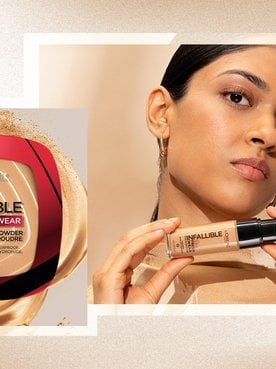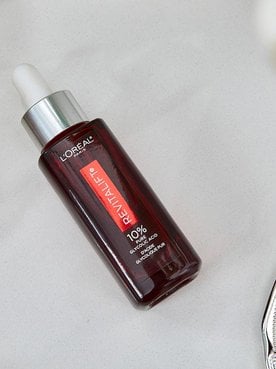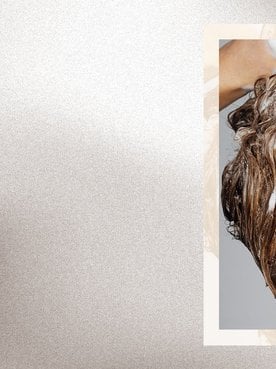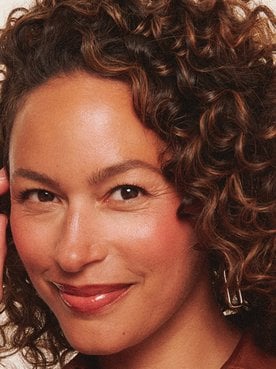Finding the right foundation color match across brands is already a tricky enough dance and when you add in different formulas, finishes, and the infusion of skin care ingredients it can seem downright impossible. One of the worst, yet common, foundation woes is when your makeup seems to start off okay but looks orange by midday.
There are many reasons why this beauty faux pas can occur, but the good news is, it’s avoidable. Ahead, we’re explaining why your foundation looks orange, plus offering tips and tricks on how to prevent an orange-looking visage.
Why Does Your Foundation Turn Orange?
As we mentioned, there are a number reasons why your foundation can turn orange. One of the most common culprits for an orange-looking face is none other than foundation oxidation. The oxidation process is caused by your foundation getting exposed to air. As a result, it causes your foundation to darken to an orange hue. This can happen post-application or while the formula is in the bottle.
Your foundation can also oxidize because of your skin texture. Excess oils are another culprit that can lead to makeup that looks orange, since they can mix with and adjust the formula of your foundation.
Your makeup could also look orange if you’re wearing a foundation that’s too dark for your skin tone or applying one with the wrong undertone. If you have a cool or neutral undertone, using a foundation with a warm tone can cause your makeup to look orange.
While some people want a warm or orangey foundation — if you have a really sallow complexion, a little bit of an orange undertone would bring some warmth to your complexion — for most people it's best to lean into the olive or neutral tones, nothing too warm. One pro makeup artist trick is to consider how close to any shade of coffee is the shade. Whether it’s the most milky light version or dark espresso, it should never be too warm.
That may seem easier said than done if you’re not a makeup pro, so at the least, stick to this simple rule of thumb: Always make sure to match your foundation to your skin tone and undertone to stay in the clear.
5 Tips to Avoid Orange-Looking Foundation
Now that you have the intel on why foundation looks orange, you can make it a point to avoid it altogether. Follow these five tips below to prevent your makeup from changing its color.
1. Choose the Right Color Foundation
You saw this coming, right? As we mentioned, one of the most important ways to prevent an orange-looking complexion is to reach for a foundation that matches your skin. You likely already know your skin tone (the natural color of your complexion), so once you determine your undertone (the pigments that come through your skin), you’ll be able to find the right foundation shade for you.
2. Apply Your Foundation On Oil-Free Skin
If your foundation looks orange, it could be a clear indicator that you’re dealing with excess oils. You already know that an oily complexion can offset the formula of your foundation. So, it’s important to start your face makeup routine on the right note.
Start by gently dabbing your skin with blotting paper, then smooth on a mattifying primer that can keep oils at bay. Try the L’Oréal Paris Infallible Pro-Matte Lock Makeup Primer, which blurs imperfections and locks in a matte finish that lasts all day.
3. Match Your Foundation and Setting Powder
Using a setting powder is another smart way to prevent orange face makeup. This makeup essential works to keep your foundation in place and absorb excess oils. It can also help neutralize your foundation as it oxidizes to prevent an orange appearance.
Opting for a setting powder from the same brand as your foundation can also prevent an orange-hued face. The L’Oréal Paris Infallible Pro-Sweep Lock & Loose Setting Powder works to give your skin a smooth finish and offers shine control for excess oil.
4. Change Your Foundation With the Seasons
Since wearing a foundation that’s too dark for your skin tone can make your complexion appear orange, it’s important that you learn how to swap your foundation by the season. In the summer months we often spend a lot more time outdoors, which naturally results in a tan complexion. Your winter foundation just may not cut it, but you don’t have to let those must-haves go to waste.
Everyone should have multiple colors and textures in their arsenal, according to the experts at L'Oréal Paris. Keep deeper colors for when you’re really tan or buff them into your face when it’s lackluster. The lighter colors that you're using in the winter can then be used as highlighter in the summertime around the high planes of the cheekbones, underneath the eyes and in the T-zone. If something became too warm or too orange feel free to use it as a bronzing component, even if it’s a liquid foundation.”
Fortunately, L’Oréal Paris foundations are affordable enough to keep a few at a time in your makeup collection. The L’Oréal Paris Infallible 24 Hour Fresh Wear Foundation and the L’Oréal Paris Infallible Up to 24H Fresh Wear in a Powder offer several shades with lightweight, buildable coverage that won’t transfer or shift.
5. Check Your Foundation for Oxidation
Since it can be hard to fix orange face makeup while you’re out and about, it’s wise to check if your foundation oxidizes before applying it all over. Swatch your foundation on your wrist or arm and wait a few hours to see if it changes color. If not, you’re in the clear. On the other hand, if it does start to oxidize, it’s time to consider swapping it for a different formula.
Next: How to Find a Foundation Match for Yellow Undertones
Edited by: Shalwah Evans, Photo Credit: Chaunte Vaughn







